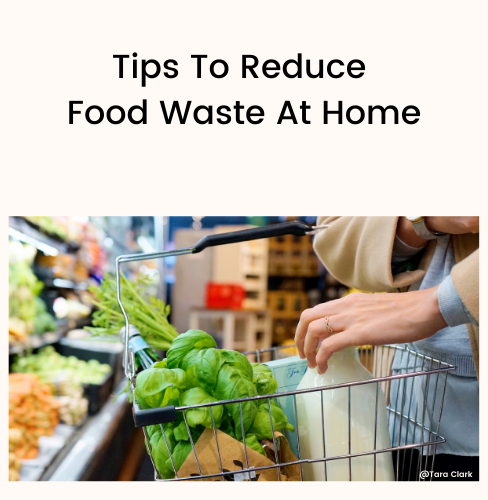Food waste is a worldwide problem— 931 million tonnes of food were thrown in 2019, equalling 17% of global food fritter. This draws us to the sobering realization that the time, effort, and resources put into producing our food are squandered away. Increased food waste is at the heart of the food insecurity crisis, all the while contributing to about 8% of greenhouse gas emissions. If we keep walking the destructive walk, we will undoubtedly face more severe catastrophes in the future. It’s imperative to change our habits, even in small ways like reducing food waste.
Here are 5 tips to reduce food waste at home:
Table of Contents
Let us look at these five tips closely to help you make the most of your precious food.
Conscious Grocery Shopping
Buying more than needed is something that attacks us when we go grocery shopping. The Covid19 crisis further added to the over-purchase rush by enlarging our food shopping appetite— overloading the basket regardless of the shelf-life potential to fend ourselves from the food supply disruption. While doing so may have been a trend during such detrimental times, buying more only results in higher food waste. Certain foods have a short shelf life, and if stored the wrong way, it further dwarfs the active life. Let us be conscious of our shopping habits.
You can note ingredients down on your shopping list, and plan your meals ahead of time. Go through the pantry to find out what is and is not necessary. Perhaps an item you already have can be used as a substitute for your recipe? It's time to bring the food from the back to the front. If you have space, you can also consider starting a small kitchen garden where you can grow your basic produce items like herbs, potatoes, and greens.
Proper Food Storage
The way you store your food can help increase shelf-life and freshness. If an organic option is not available, wash fruits and vegetables thoroughly to rinse any harmful chemical residuals or even dust and pollutants. After drying, store them well to avoid moisture which can cause produce to go bad untimely. Here are some quick temperature tips for storing your groceries. Tips on storing:
- Apples, broccoli, carrots, lettuce, eggplant, etc. in cold and moist places.
- Garlic and onions in cold, dry, and ventilated places.
- Hot peppers, pumpkins, sweet potatoes, etc., in warm and dry conditions.
- Potatoes in cold, dark, and dry places.
- Corn and peas can go in the refrigerator.
- Tomatoes, avocados, bananas, papayas, peaches, etc., on shelves or countertops.
- Perishables like meat, poultry, and seafood in the freezer.
- Herbs in the refrigerator after wrapping them in a paper towel.
Related blog: What is GMO?
Watch Out For The Serving Size
Food waste accounts for 30-40% of the total food supply waste in the United States. About one-third of food goes uneaten, out of which household food waste makes up about 81% (20.3 tonnes). A right serving portion can help prevent food loss (and also save money).
There are already a few restaurants offering multiple portion choices and a range of alternative sides, allowing consumers to buy a meal as per their budget, taste, and appetite— helping reduce post-consumer waste. You can use a similar idea at home, start with small portions, and supplement with serving bowls.
Freeze and Store Any Leftovers
There will undoubtedly be some leftovers in the serving bowls after the wine and dine session. What you can do is freeze them for later use. Frozen leftovers can help in developing a meal plan— consuming them on time to avoid waste. If you have purchased a massive amount of food, try the pickle hack— pickled cucumbers, apples, radishes, and other vegetables can make delicious side dishes and last longer in the refrigerator. Use other food scraps such as meat bones, skin, and vegetable peels as broth ingredients.
Compost Scraps
Got inedible food scraps? Go for a compost plan. Compostable scraps include stems, roots, peels, tea leaves, spoiled food, etc. Food waste is a unique compost agent— it has high moisture content and is easy to biodegrade. Plus, composting will not only reduce waste but also improve soil and water quality. In some cases, it can even reduce the need for fertilizers and promote higher crop yields. The municipal solid waste landfill (MSWLF) in the US costs the country around $53.72 per ton— practicing home compost can help save billions of dollars on waste management.
Related blog post: How to compost at home
Final Thoughts
There are only 9 years left to achieve SDG 12, target 12.3— the need to reduce food waste is an urgent matter. So, let’s start at home to contribute to the reduction of food waste. If all of us make a small change in our food consumption habits, the ripple effect of positive outcomes will continue to grow. Food waste management is a powerful tool for promoting sustainability while also healing our planet— we got this!





